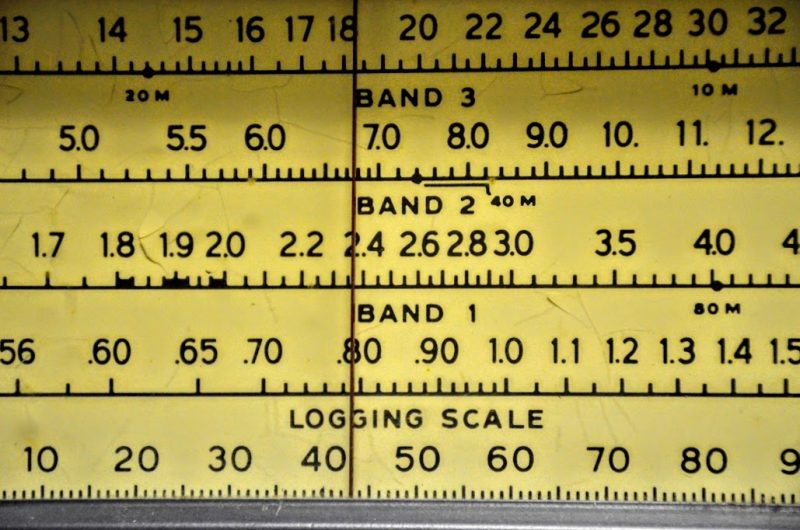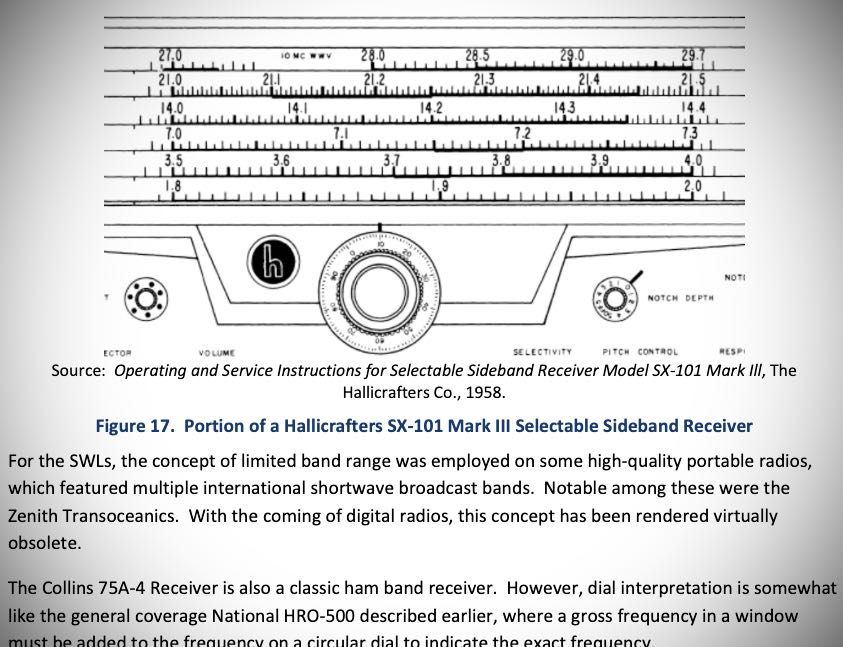 Many thanks to SWLing Post contributor, Bob Colegrove, who recently shared this excellent article and has kindly allowed me to share it here in the the Post. Bob prefaced it by saying, “Being a retired technical writer, I started the attached article some time ago for my own amusement, but it quickly got out of hand.”
Many thanks to SWLing Post contributor, Bob Colegrove, who recently shared this excellent article and has kindly allowed me to share it here in the the Post. Bob prefaced it by saying, “Being a retired technical writer, I started the attached article some time ago for my own amusement, but it quickly got out of hand.”
“Got out of hand” in a very good way, Bob!
I love how this piece takes us through receiver history and explains, in detail, the mechanics and innovations. It’s also a very accessible piece that both the beginner and seasoned radio enthusiast can appreciate.
But don’t take my word for it, download it and enjoy!
Click here to download The Joys and Challenges of Tuning Analog Radios as a PDF.
Thank you again, Bob. This is a most enjoyable and informative read! This was obviously a labor of love. Thanks for sharing it with our radio community!


I discovered the use of an external LO signal back in 1970 while an SWL, waiting for my novice license to arrive. I wrote to several “friendly” shortwave DX programs and was basically told ” Kid, you will shoot your eye out!” I was 15. I finally sent the suggestion to Radio Checkoslovakia. They wrote back saying it worked and they were going to read my letter at a certain time. They did, and the next day the government pounced on my parents. Our mail was searched and we had to sign for it. We lived in the country and a listening van was stationed outside our house for over a week. The significance of this was that Russian tanks had recently invaded Prague and they probably had SSB capability. The common radio could detect advanced communication of the day. The same was true for our stuff. I haven’t told anyone about this technique because I escaped something that could have ruined my future career. W9WP.
What a great story, Bill. One would think playing two radios simultaneously close together and getting a heterodyne would have been a common experience – at least an easily-understood engineering phenomenon. Goes to show there is more danger from radios than an electrical shock. Beware the FCC and IRS.
I find that older “knob type” analog receivers are far easier to tune that the clickty clickety click click click of an SDR on SSB/CW signals.
Fantastic article Bob. Thanks for putting it together.
The section titled “A New Trick for an Old Dog” is a very interesting technique I had never thought of.
It reminded me of a similar trick I used to use to tune in SSB on a radio without a BFO. I’d take another radio, place it next to the radio receiving the SSB signal and then carefully tune so that the 455 IF signal would beat with the SSB. It took a some careful tuning (a radio with a geared tuning capacity helped a lot), but it could be done.
I just did a test using the Panasonic RF-2200 (BFO off), tuned in a 20 meter SSB signal, then used an analog Sony TR-910T 3-band portable to create the BFO effect. Very touchy to tune, but the Sony has a fine tune control, so was doable.
Such fun. Thanks for the nice article.
73
Bill WD9EQD
Smithville, NJ
Thanks to the authors for a walk back into my early years. When I was a student,(centuries ago), one of our lab experiments was building and evaluating a thing called a phase lock loop , PLL to you techs out there. I own and use modern Icom radios and still use and maintain my Drake 4 line gear, although the feature rich modern radios are a quantum leap forward obviously. Good DX all!
Thanks Bob and Thomas. That is a very interesting and entertaining read. Brings back memories.
I still have my grandfather’s old wooden floor model radio. And I remember how aggravating my Realistic DX-160 could be at times with its analog dial. Lots of fond memories and the years have erased some of the frustrations of those old rigs.
Thanks again for the walk down memory lane.